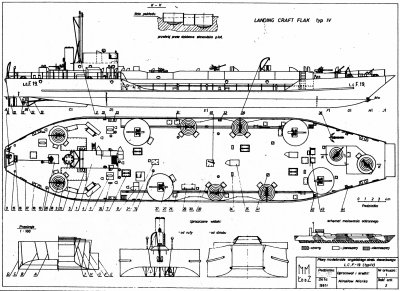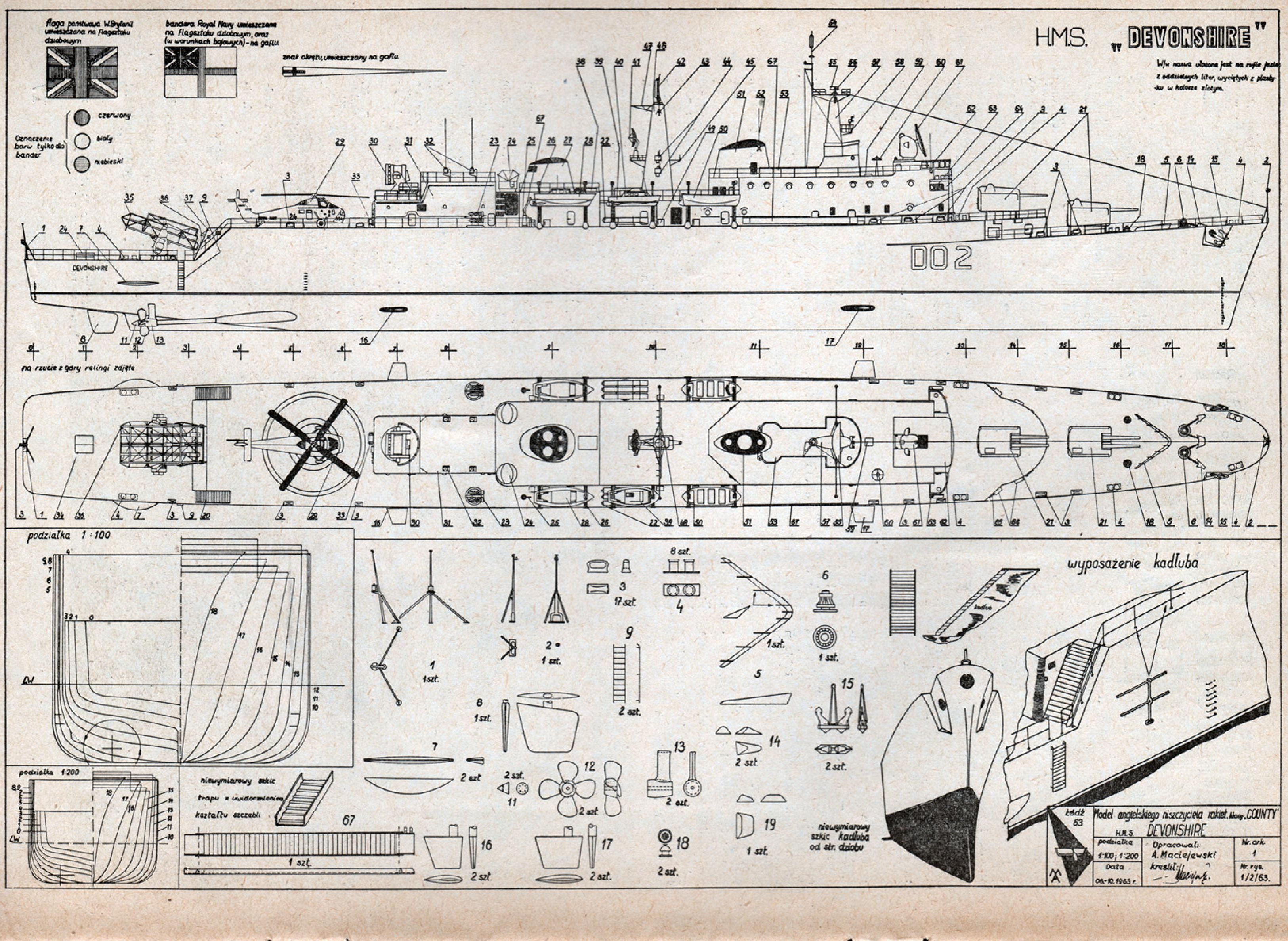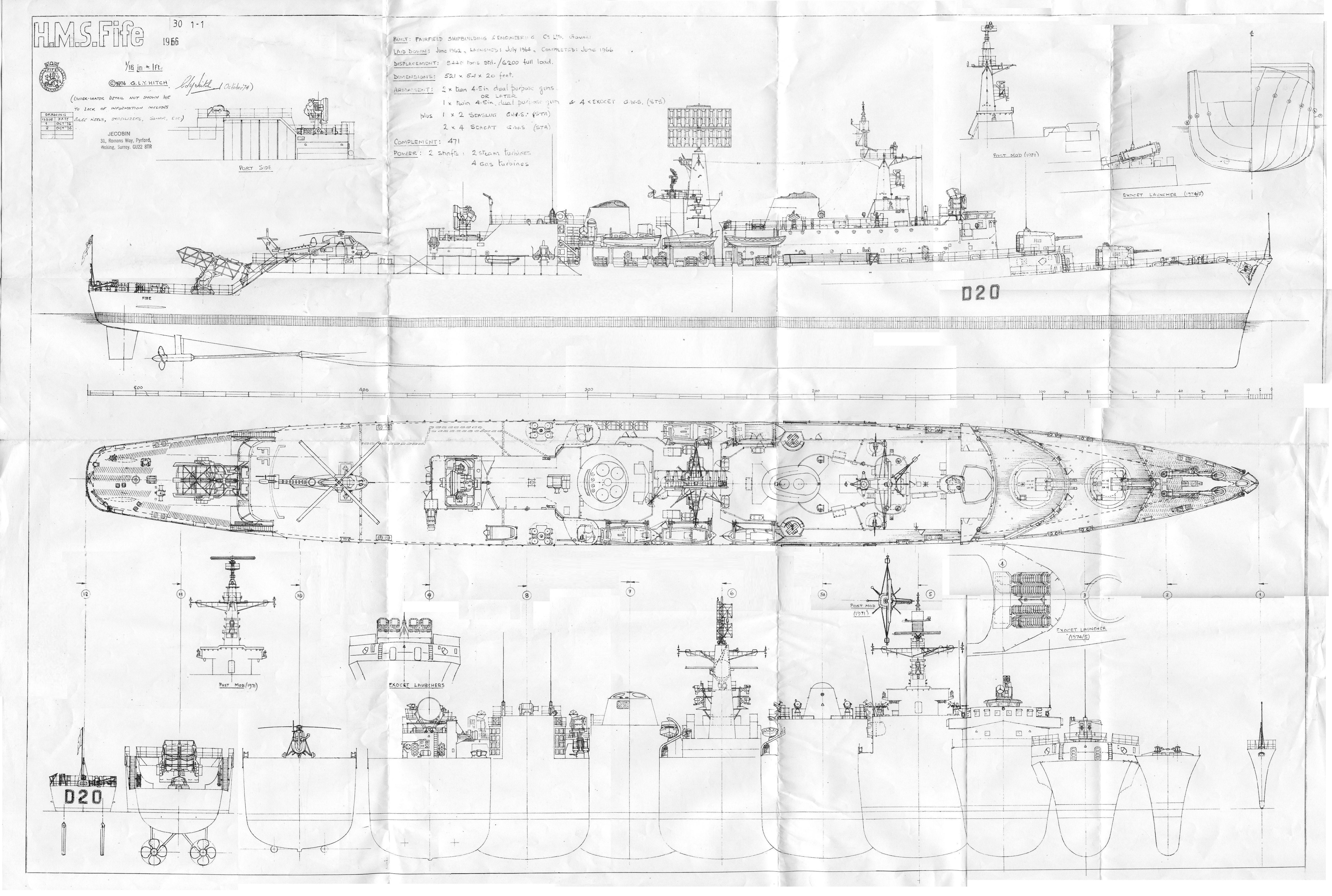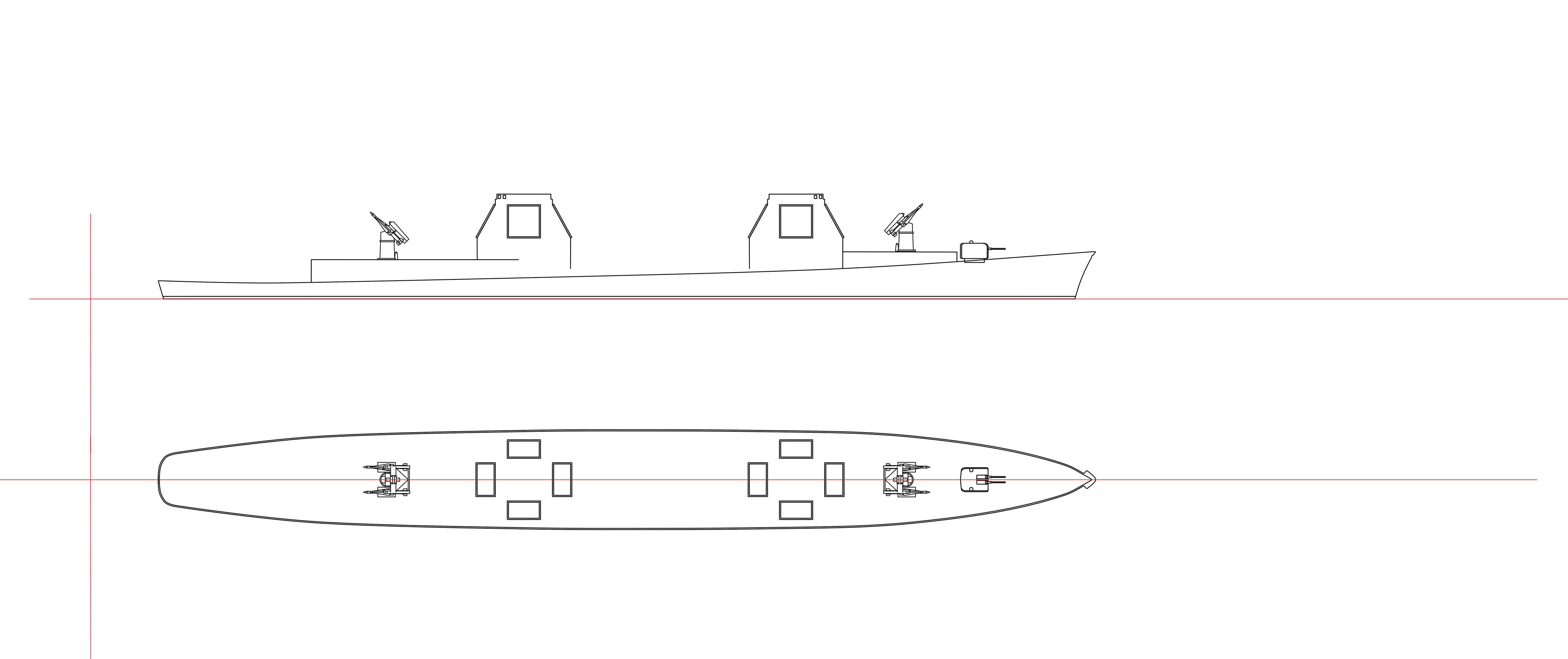The Next-Generation Missile
Sea Dart was not directly related to Seaslug because the originally planned second-generation missile was a separate project. In the mid-1950's it had been a navalised version of the land based Blue Envoy, the 'Stage 1 3/4' missile. Blue Envoy was cancelled in the 1957 defence review, on the ground that by the time it was ready the main threat against the United Kingdom would be ballistic missiles, not bombers. It was understood that this argument did not apply to the fleet: the new follow-on to Sleaslug was the New Guided Missile System (NIGS). By 1955 there was a proposal for a higher-capacity fire control system analogous to the US Typhon, which ultimately evolved into the current Aegis. This idea probably helped inspire proposals for an electronically-scanned radar, the abortive Type 985.
[ADM 220/2179]
By September 1959 NIGS was envisaged as a semi-active homer using a 0,64-ton dart with a 0,83ton booster, fired from a twin launcher, presumably comparable in size to the projected long range version of the US Typhon, as then understood. By early 1960 it was credited with a range of 150nm. The missile was so much smaller then Seaslug that i seemed a much smaller ship could carry it. No such missile ever entered development, but as of 1959 it seemed to be very significant future possibility. Typhon may have been a NIGS alternative; a British constructor's notebook shows calculations for a Typhon installation in a 'County' class hull, with 64 or 80 missiles.
[Notebook 1073/3 includes calculations involving the characteristic Typhon tower with its SPG-59 radar.]
In June 1959 DNC ordered a sketch design of a NIGS frigate to see how big the ship would be. There was no tentative Staff Requirement. Although the designers began with a Type 12 hull, the end result was about the size of a 'County'. It would have been underpowered (for the usual 28kts deep and dirty) with a Type 12 powerplant. The missile system would have used for four surveillance radars, four guidance radars, and four illuminators, serving a twin launcher with 48 NIGS missiles. In addition there would have been a 4,5in gun aft (ultimately omitted) and two quadruple Seacats (GWS 21). The ASW battery would have been a lightweight helicopter (twelve torpedoes) directed on the basis of a Type 184 sonar. An early estimate was a 4.750 tons deep (424ft x 54ft x 15ft).A July 1959 attempt to boost speed to 28kts would have used a missile destroyer powerplant (60.000 SHP) in a 6.160-tonhull (440ft x 54ft x 41ft 6in depth).
An alternative Study 1B used typical Seaslug missile stowage: twin magazine conveyors (14 missiles each) and twin loaders (8 missiles each) for 2-ton missiles. Other armament would be a single Mk 5 gun (4,5in) and two Seacats, plus Limbo and 12 fixed torpedo tubes for Bidders. Study 1C omitted the gun. Study 1D added a missile battery aft, so the ship would have 40 missiles at each end. This ship would have displaced about 7.400 tons (470ft x 59ft), which was roughly comparable to (but shorter than) contemporary US double-ended missile ships (Leahy class). There was also ships with 64 missiles.
[Constructors' notebooks mentioned: Scheme 2, 'County' class conversion with 64 missiles; Scheme 3, 80 missiles; Scheme 5, two twin launchers, two twin 4,5in guns, 20-missile horizontal loader and 16-missile vertical loader plus 204 rounds stowage; Scheme 6, twin launchers with no guns; Scheme 7, variant of Scheme 6; Scheme 8, variant of Scheme 5; Scheme 10, two twin launchers with twin 6-missile loaders and 14-missile conveyors aft, twin 6-missile loaders forward, and no guns (also given as a 10-missile vertical drum forward and twin 10-missile loaders aft); Scheme 11, two twin launchers, twin 18-missile loaders, twin 18-missile conveyors, and two twin 4,5in guns; Scheme 12, one twin launcher aft (48 missiles) and two twin 4,5in guns forward. Scheme 13 was nuclear powered with two twin launchers (24 missiles each) displacing 7.700 tons (535ft x 60ft x 17,4ft 29,5kts deep and dirty), roughly equivalent to the contemporary USS Bainbridge, but with fewer missiles. Scheme 14 used conventional steam (7.386 tons, 535ft x 60ft x 17ft, 3.500nm at 20kts). Scheme 15 used a CONAS (nuclear/steam) plant (7.950 tons 550ft x 60ft x 17,4ft). Scheme 16 was all-nuclear (8.500 tons 560ft x 60ft x 18,1ft). Scheme 17 had a steam / gas turbine plant as in 'County']
There were several alternative launcher schemes: a Seaslug-type 13-missile horizontal loader or twin 10-missile horizontal loaders or a 16-missile vertical loader (as in Sea Dart) or twin 12-missile loaders or a 10-missile vertical drum loader; or magazines for 47 or 24 missiles or twin 18-missile conveyor stowage. The system might provide nuclear warhead stowage for up to 25% of the total. Nothing came of these studies because as early as November 1958 the Fleet Requirements Committee decided that the frigate-sized missile, SIGS (which became Sea Dart) was more urgent, as the future surface fleet would consist main of frigates, many of which would have to operated on detached service.
In addition to new missiles, First Sea Lord was intersted in nuclear powerplants, presumably inspired by the US nuclear 'frigate' (DLGN, Bainbridge) project. The US D1G nuclear powerplant was tried both in 'County' hull and in a fresh double-ended design. A preliminary drawing (about 1961) showed a 530ft long ship (48ft hull depth including a double bottom) displacing 8.250 tons, and probably capable of 28,5kts deep and dirty. There was also a CONAS (nuclear-steam) (note Friedman here written CONAD which implies Combined Nuclear And Diesel but in the brackets he states Nuclear Steam so I assume he originally meant CONAS)
study for the Director General of Engineering (successor to E-in-C) using a 20.000 SHP reactor plus a 20.000 SHP pressure-fired boiler; another study considered 30.000 SHP nuclear and 30.000 SHP pressure-fired plants. It is not clear how serious these studies were, but the nuclear theme returned several times later.
For NIGS, nuclear power was important as a way of providing the enormous electrical power that a very large radar system might require. This idea had originated in the United States in the context of the Typhon system, and references to it occur in the design notebook of W. J. Holt, a senior British constructor.




